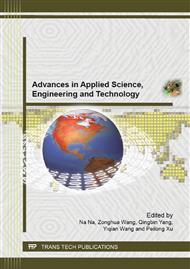p.852
p.858
p.862
p.867
p.871
p.875
p.879
p.883
p.887
A Epidemic Model with Inhomogeneity and Mobility Based on Cellular Automata
Abstract:
A cellular automata model with inhomogeneity and mobility was presented. The inhomogeneity in individuals’ behaviors was considered by assigning the distance on their neighbors, varying levels of infectivity and susceptibility. The individual mobility was reflected by random walk cellular automata. The proposed model can serve as a basis to simulate influenza A (H1N1) based on real data. We studied the effect of two population movement parameters on the epidemic propagation: the percentage and the max-distance of population movement. The results show that the epidemic spreading is more sensitive to the former. The infected individuals are positive growth while the percentage of population movement increases. And the number of infected individual eventually stabilizes in the case of plotting the relation of the max-distance against the infected.
Info:
Periodical:
Pages:
871-874
Citation:
Online since:
June 2013
Authors:
Keywords:
Price:
Сopyright:
© 2013 Trans Tech Publications Ltd. All Rights Reserved
Share:
Citation:


